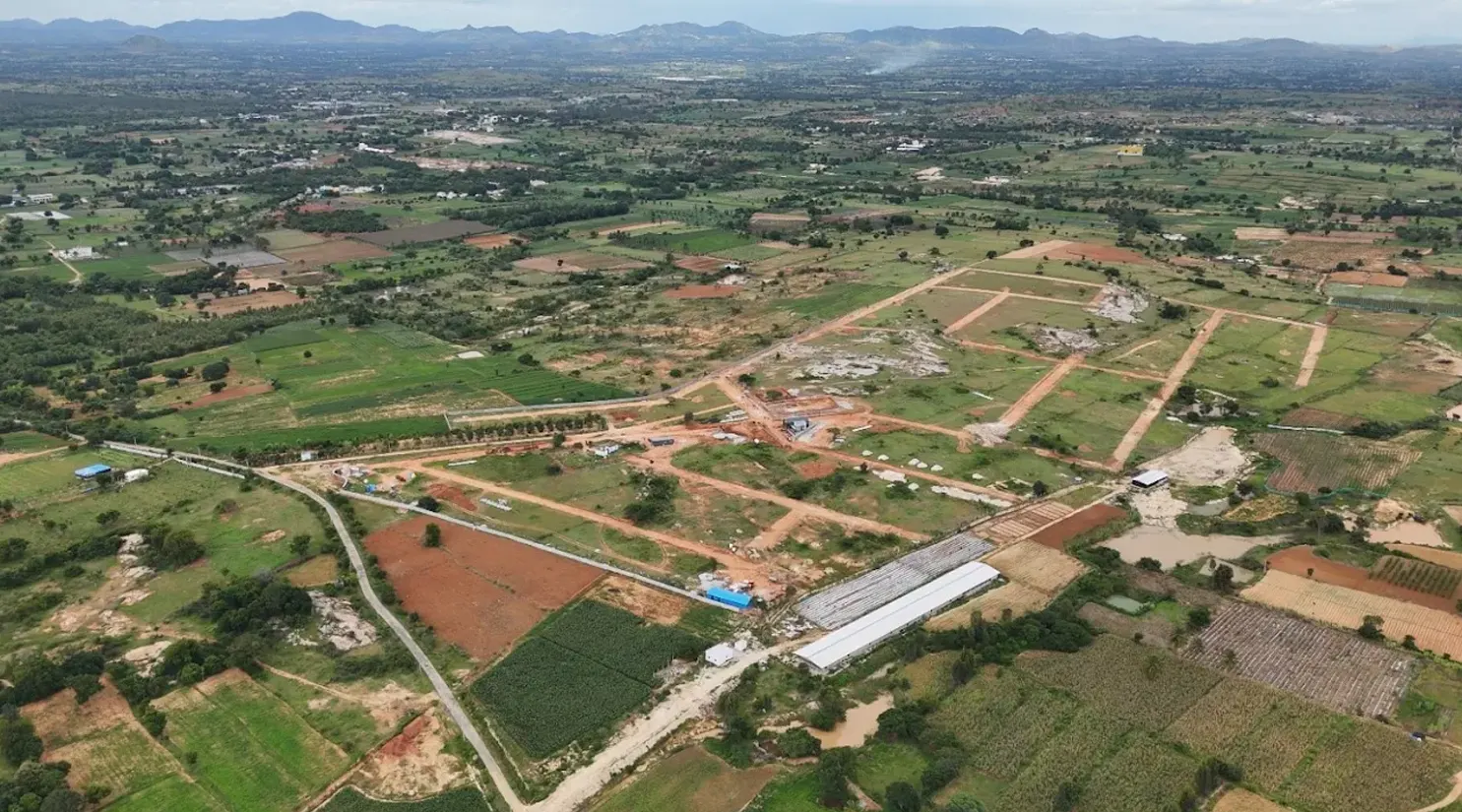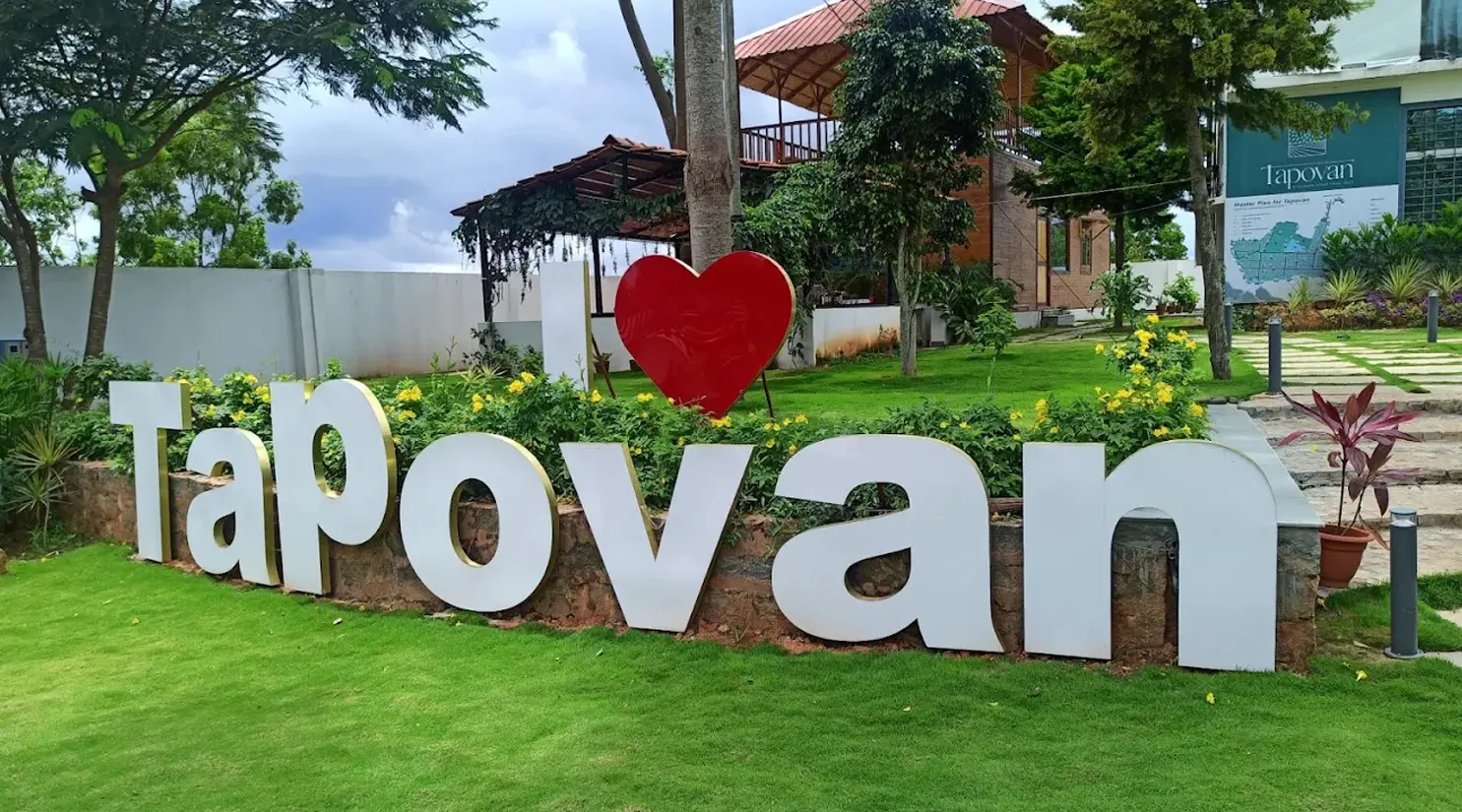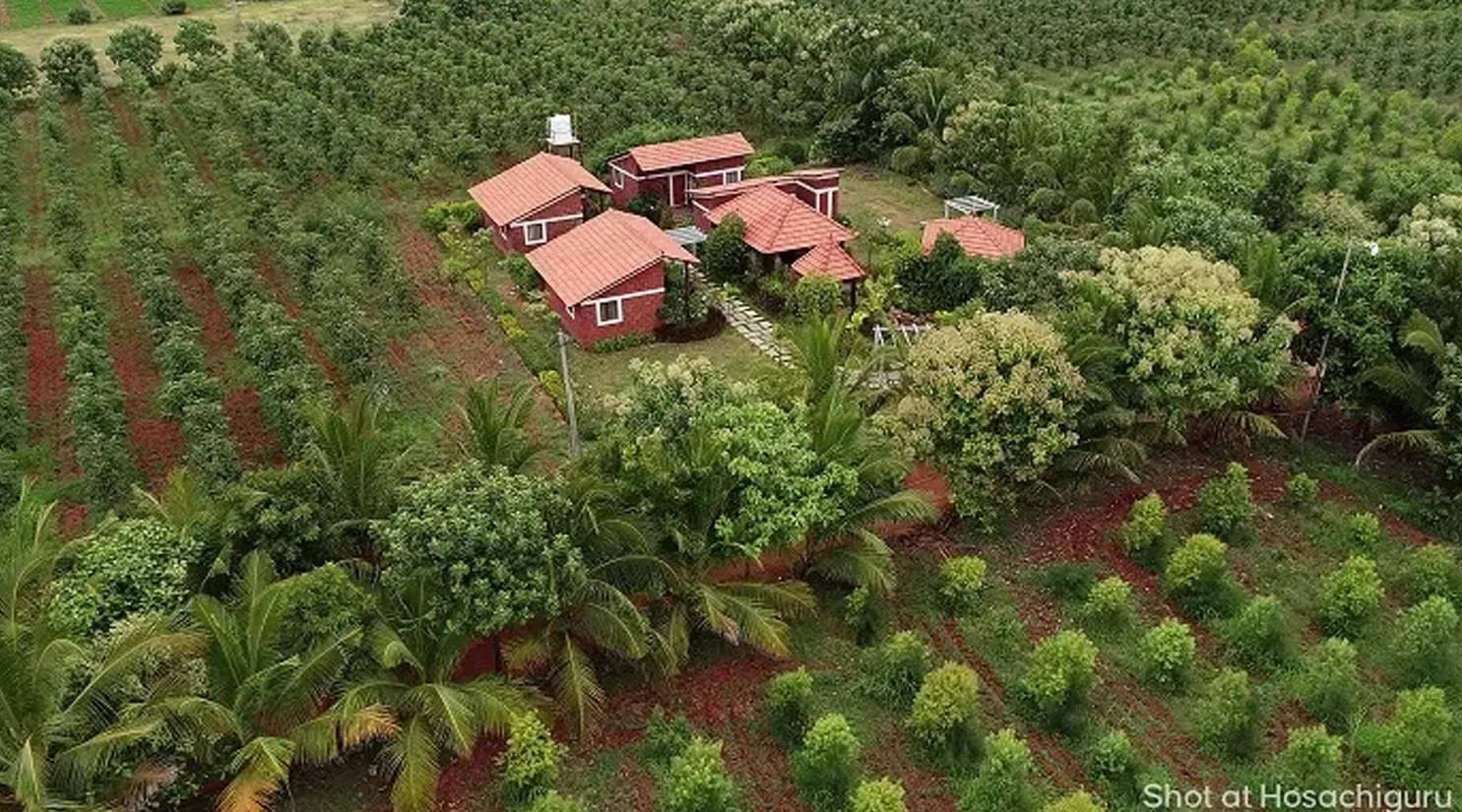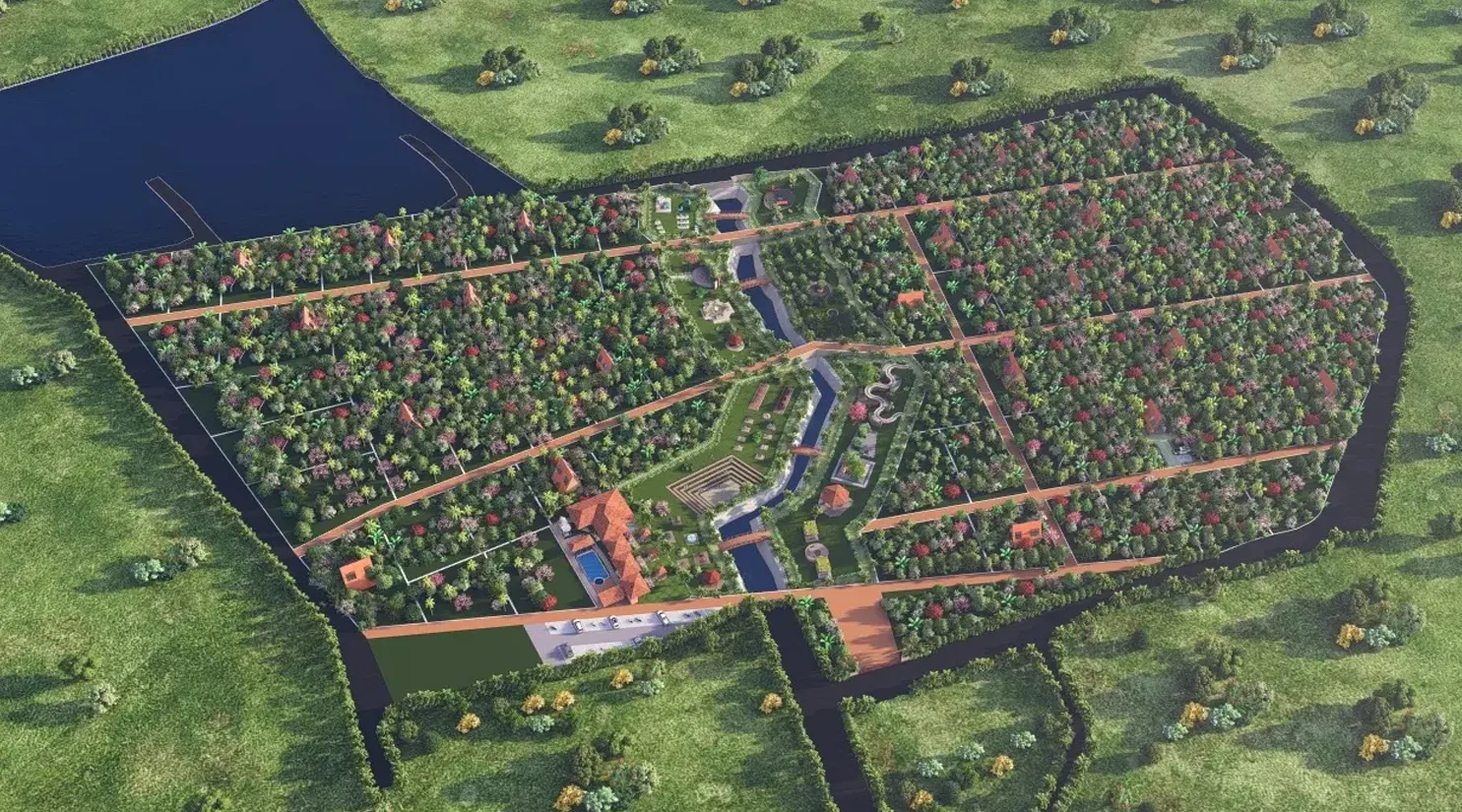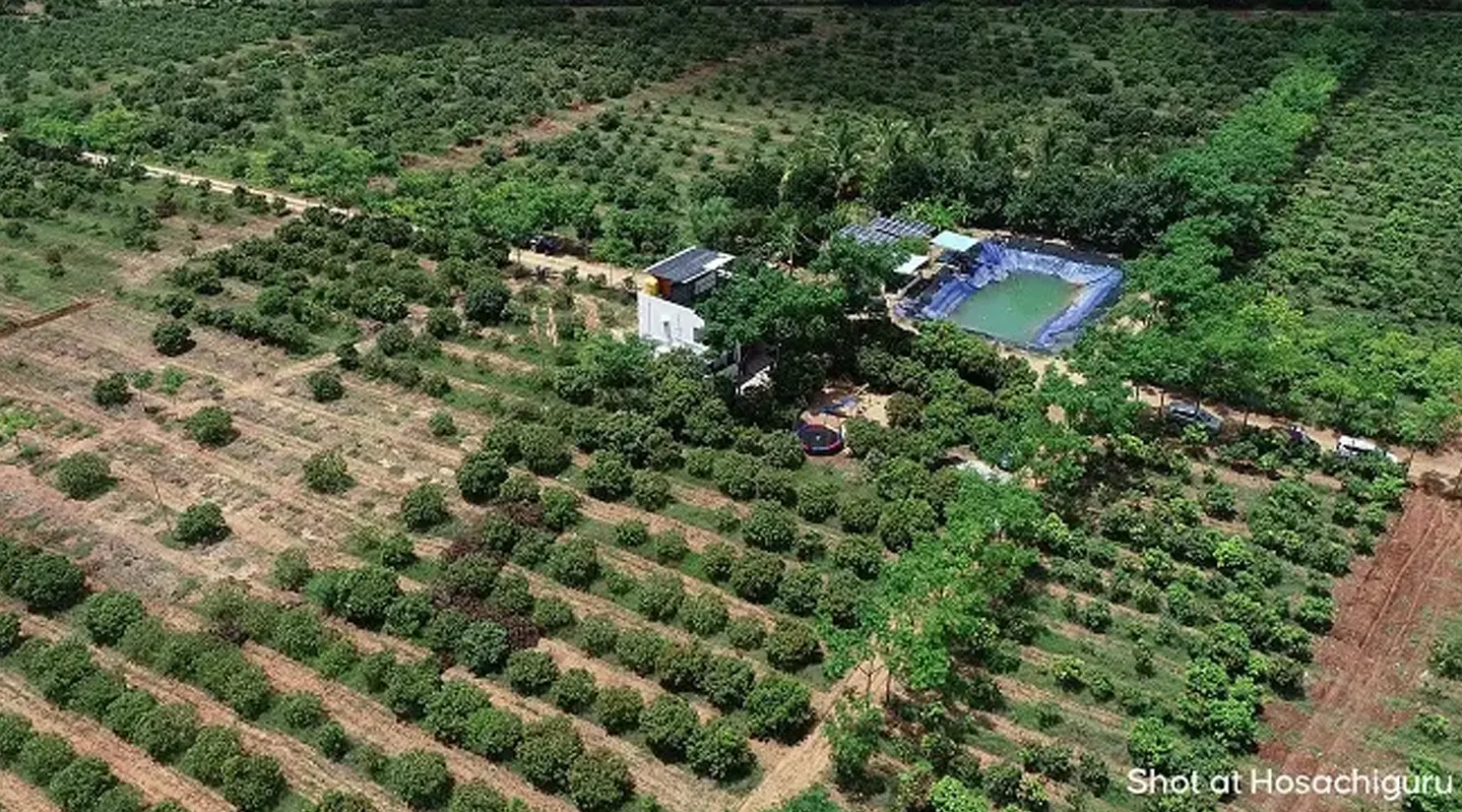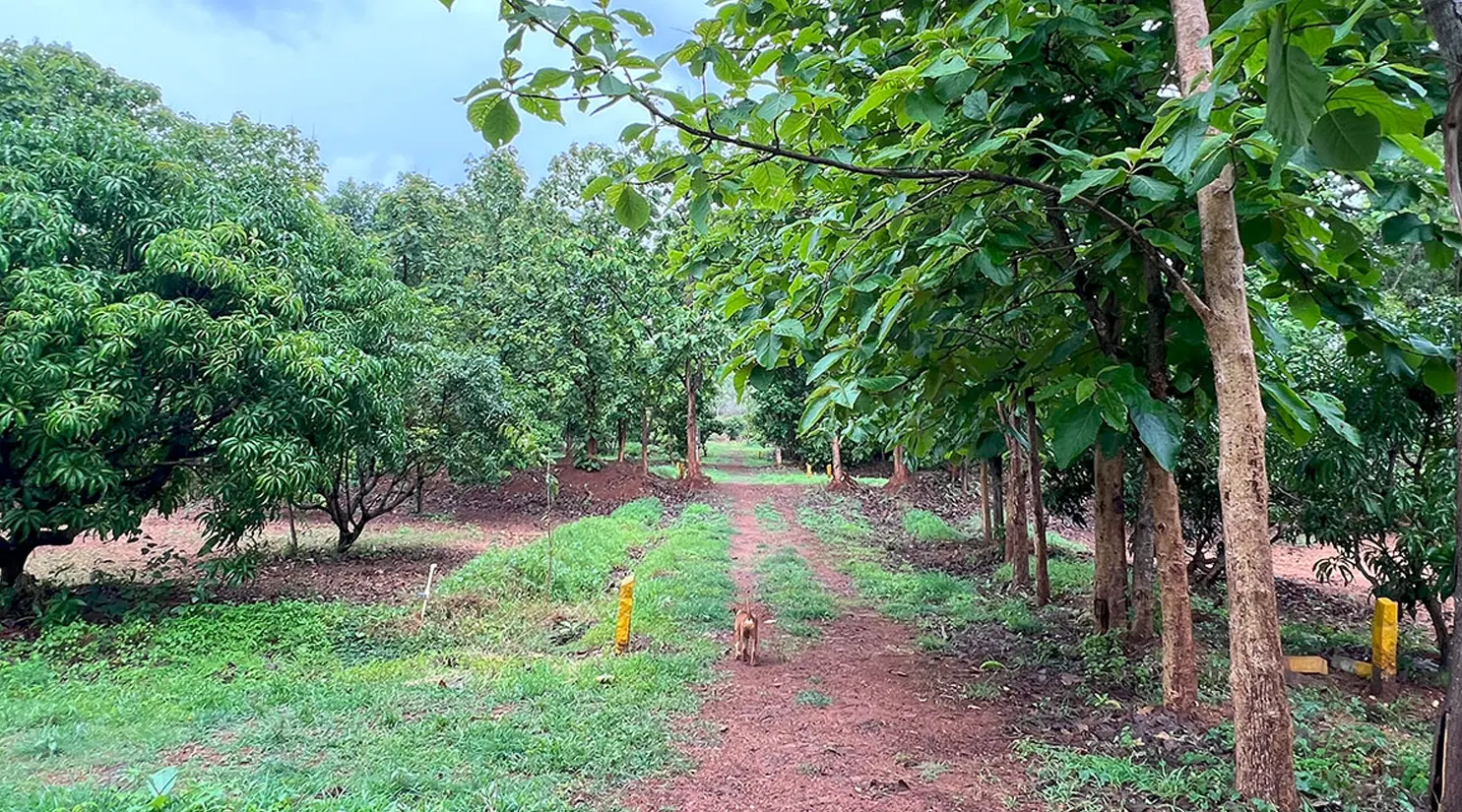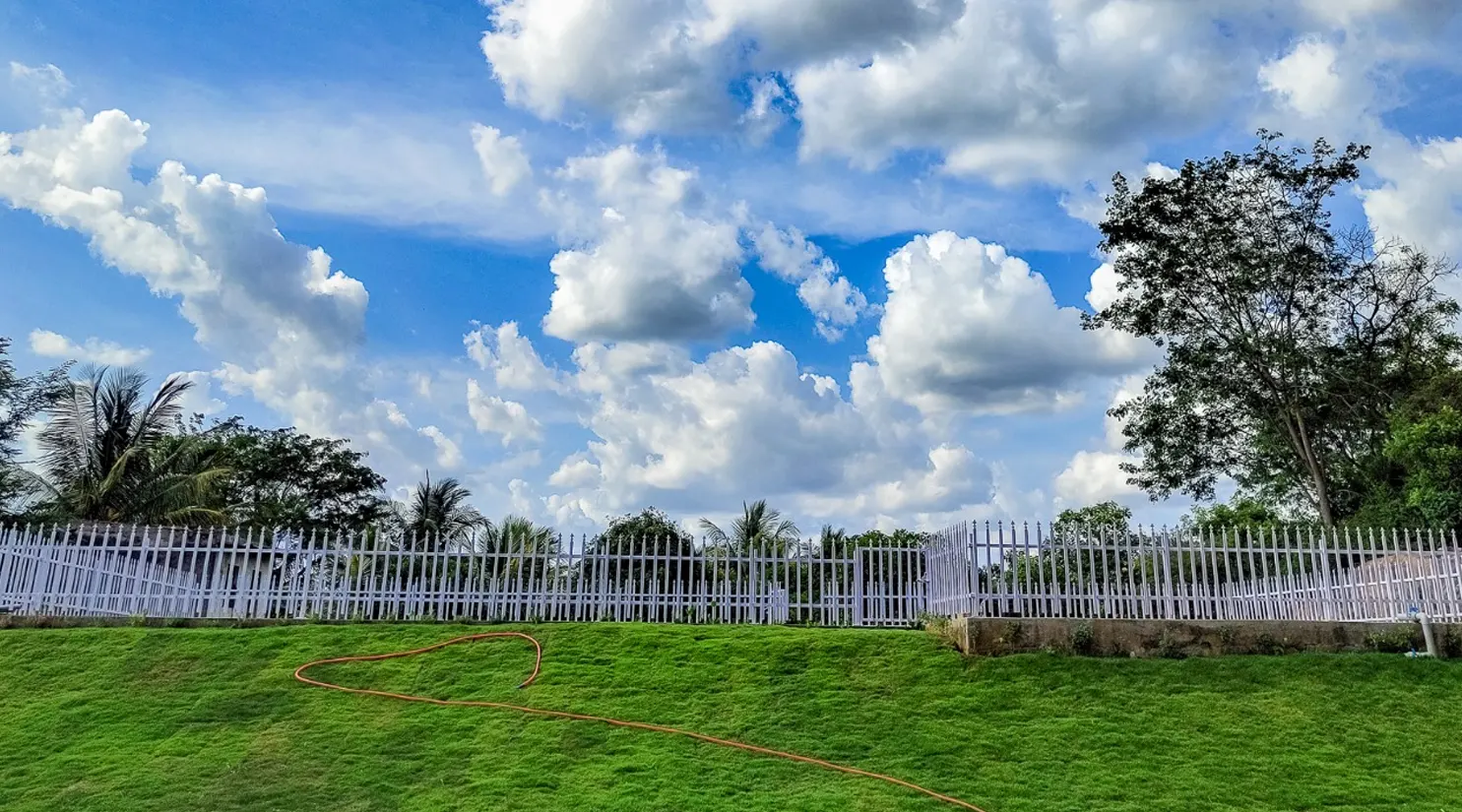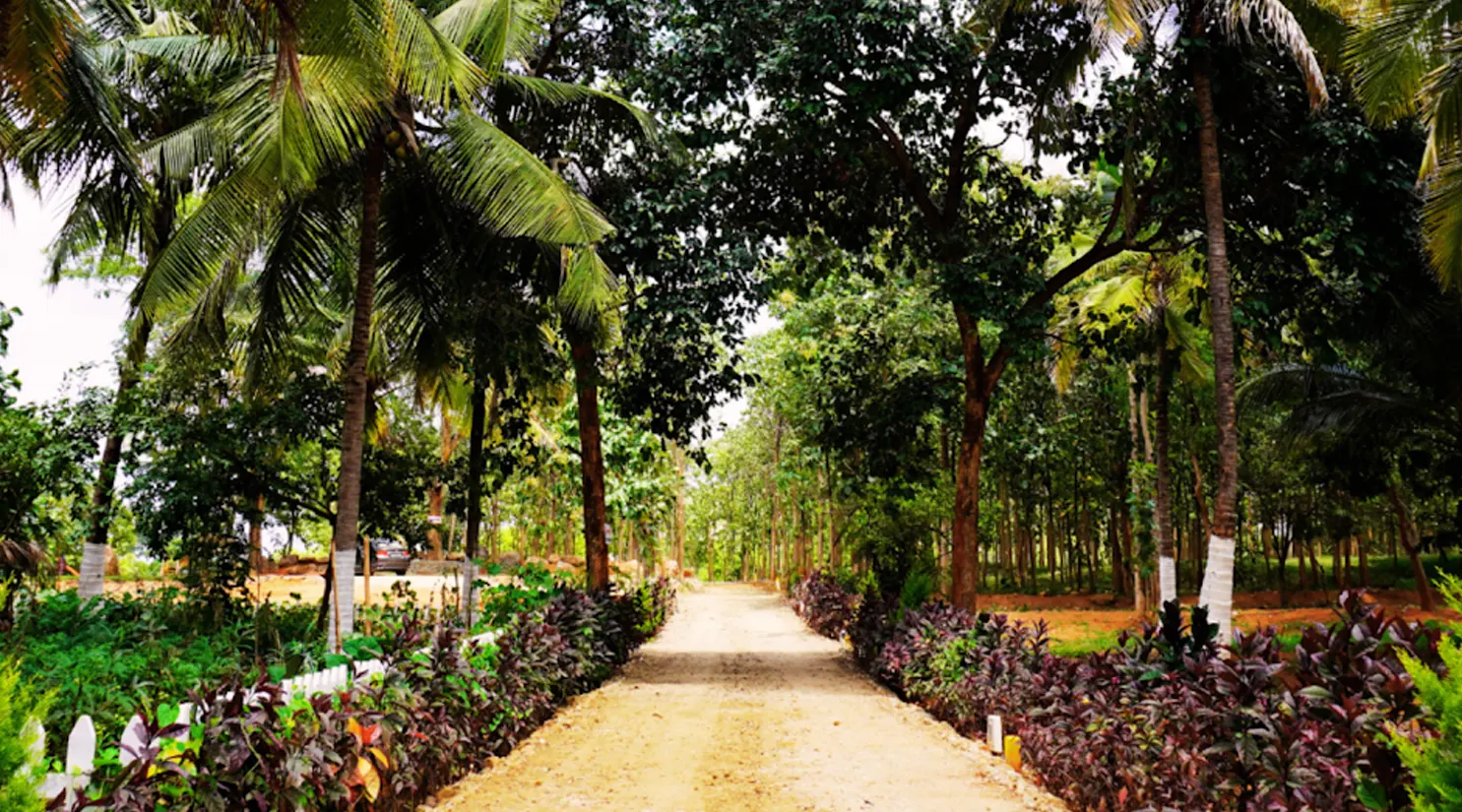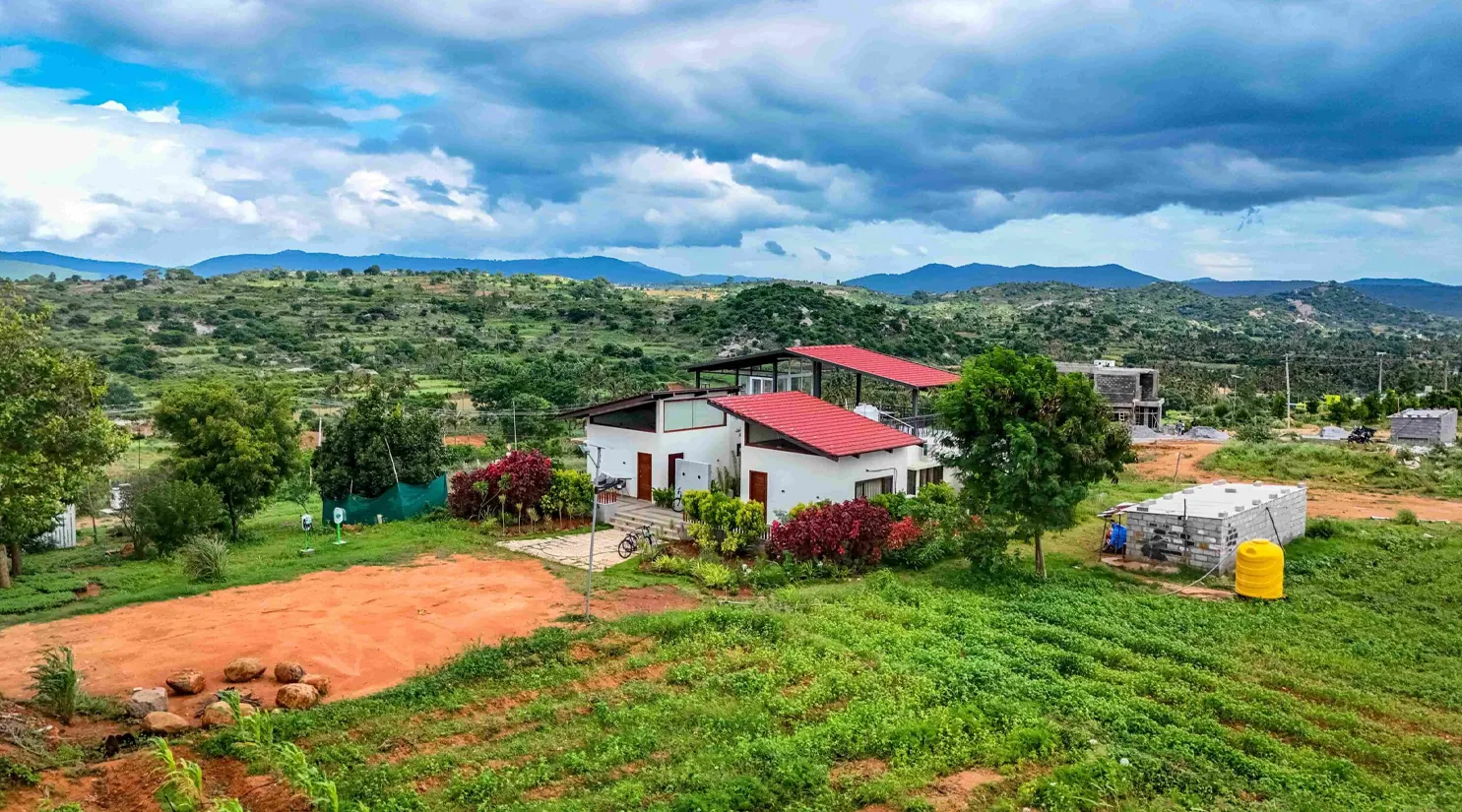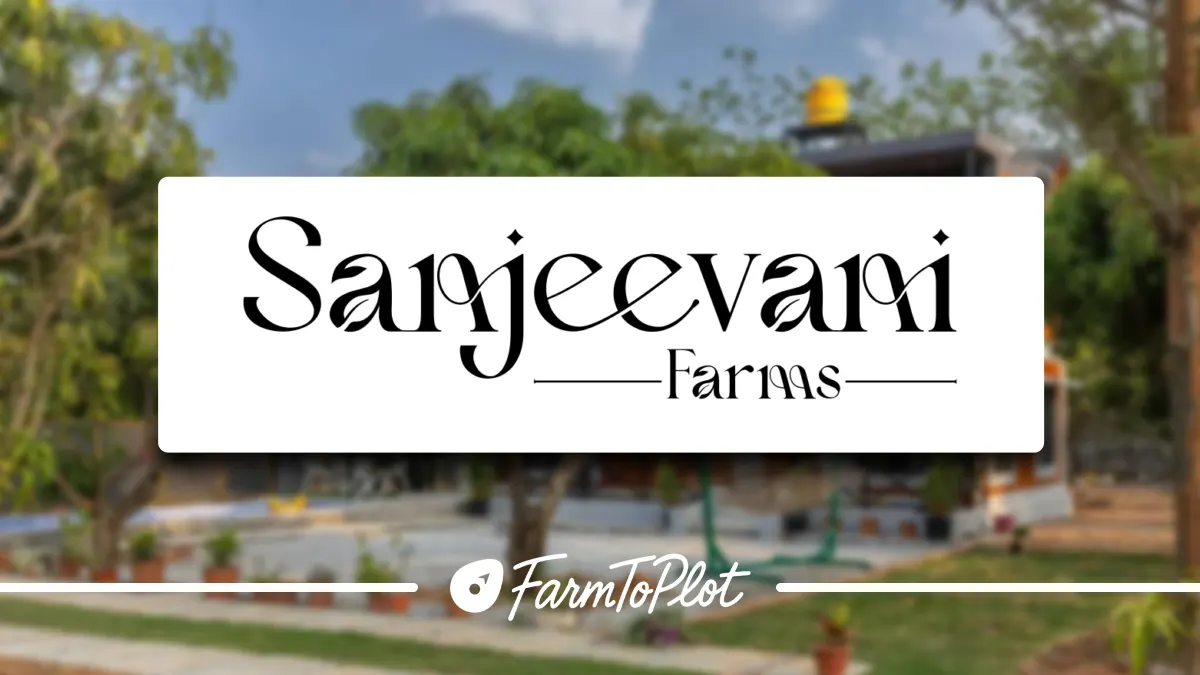Passive Income from Farmland: How to Earn Without Farming Yourself

Passive Income from Farmland: How to Earn Without Farming Yourself
With rising interest in sustainable living and smart investing, farmland has emerged as a popular asset class for generating passive income. But what if you don’t have the time, skills, or desire to farm the land yourself? Imagine owning a plot of farmland near Bangalore where a professional team handles everything while you receive timely updates and a share of the income—this is the promise of managed farmlands.
This blog explores how individuals can earn passive income from farmland ownership in India, even without lifting a shovel. We’ll uncover real-world examples, explore the different models available, and explain why this trend is gaining momentum among modern investors.
What Is Passive Income from Farmland?
Passive income is money earned with minimal day-to-day effort. In the context of farmland, it means earning through your land even if you are not actively farming it. This is made possible through:
- Managed farmland models (professionals handle everything)
- Lease agreements (fixed yearly rent from local farmers)
- Revenue-sharing contracts (split profits with cultivators)
- Agri-tourism ventures (convert farms into weekend stays)
- Timber or plantation projects (long-term harvests)
These models are designed to make rural land ownership profitable, without requiring you to be a full-time farmer.
If you’re unfamiliar with managed farmland, it’s a system where a company or team manages the land on your behalf. They take care of soil testing, crop rotation, water supply, labor, marketing, and harvest—while you receive income and regular reports.
Why Farmland Is a Smart Investment for Passive Income
- Tangible asset: Unlike stocks or crypto, farmland is a physical, appreciating asset that you can visit, develop, and improve. It provides a sense of ownership that digital assets lack and holds enduring value over generations.
- Scarcity value: Agricultural land in India is tightly regulated, making it a finite resource. With increasing urbanization and land conversion for infrastructure, cultivable land is becoming scarcer—pushing its value steadily upward.
- Hedge against inflation: As food prices rise, so does the value of agricultural output and the land it grows on. Historically, farmland investments have performed well during inflationary periods, providing a buffer for your portfolio.
- Low volatility: Unlike stock markets that react to global news cycles, farmland values change more gradually. This makes it a stable asset for risk-averse investors seeking predictable long-term gains.
- Multiple income streams: Farmland can generate revenue through diverse avenues—seasonal crops, long-term plantations, leasing to local farmers, or converting part of the land into eco-tourism or event spaces. This flexibility allows you to choose a model that matches your risk appetite and time horizon.
Combined, these factors make farmland not just a passive income tool but a strategic asset that aligns wealth growth with sustainability.
Popular Models to Earn Without Farming
1. Managed Farmland Projects
In this model, a professional team handles everything—from land preparation and crop rotation to marketing and sales. You invest in a plot, and they do the rest.
-
- How You Earn: You receive annual or semi-annual returns from crop sales, timber harvests, or even produce-based revenue sharing. Some models offer additional income streams such as agri-tourism or short-term rentals based on location.
- Who It’s For: This model suits busy professionals, NRIs, retirees, or first-time investors who want to enjoy the rewards of farmland ownership without the burden of operations.
- Benefits:
-
-
- End-to-end service from certified agri-professionals
- Regular updates and transparent reporting
- Managed infrastructure: drip irrigation, fencing, and access roads
-
- Risks:
-
- Initial costs may be higher
- Returns depend on crop performance and market conditions
- Example: A 0.25-acre mango plantation managed by a developer in Karnataka yields ₹30,000 annually in produce-based profit sharing. The owner receives quarterly updates via email and an annual on-site farm visit option.
2. Long-Term Leasing to Local Farmers
If you own land in a fertile, cultivable region, you can lease it to local farmers for a fixed rent. This arrangement is typically backed by a formal lease agreement for 3–9 years.
-
- How You Earn: You get a fixed annual lease amount, regardless of harvest outcome. It provides a steady stream of passive income without risks related to crop failure.
- Pros:
-
-
- No operational headaches
- Predictable income
-
- Cons:
- Requires legal agreements and periodic oversight
- No share in bumper harvests
- Ideal For: Conservative investors who prefer stable, low-risk income.
- Example: Leasing a 1-acre plot in Tamil Nadu may fetch ₹20,000 to ₹30,000 per year depending on soil fertility and demand.
3. Revenue-Sharing Contracts
Instead of fixed rent, you can sign a contract where you share a percentage of profits with a farmer who cultivates your land. This model is popular in regions where seasonal cash crops are grown.
- How You Earn: A pre-agreed share of the revenue from produce, typically 25%–50%. Some investors negotiate flexible terms based on inputs they may fund, such as fertilizers or irrigation.
- Good For: Investors who are comfortable with variable income and want higher returns than leasing.
- Example: A groundnut crop earning ₹60,000 from a 1-acre plot could give you ₹30,000 under a 50% sharing agreement. Earnings may vary each season.
4. Agri-Tourism and Farmstays
If the farmland is near a city or tourist spot, you can convert part of it into a weekend retreat or eco-stay. These properties are especially popular among urban families and digital nomads.
- How You Earn: Through bookings, event rentals, workshops, or farm visits. Additional revenue can come from selling organic produce or handcrafted goods on-site.
- Bonus: You create a unique brand identity and contribute to rural employment.
- Example: Farmstays in Maharashtra near Pune earn ₹1.5–3 lakhs per season from short-term rentals. Some owners also host yoga retreats and farm-to-table events.
5. Timber or Plantation Farming
Timber crops like Teak, Sandalwood, or Mahogany are planted once and harvested after 10–15 years. Some developers offer “plantation as a service” with complete lifecycle management.
- How You Earn: One-time bulk returns after maturity. Timber prices typically appreciate over time and can be sold domestically or exported.
- Ideal For: Long-term investors looking for high-value payouts and capital appreciation.
- Example: A 1-acre sandalwood plantation can yield ₹50–75 lakhs after 12–15 years depending on tree count and market value. Investors are updated on plant growth and health through periodic reports.
How to Choose the Right Model for You
Choosing the ideal income model depends on your goals, time horizon, and level of involvement you’re comfortable with. Here’s a breakdown to help guide your decision:
- For consistent yearly returns with zero involvement:
Choose long-term leasing. It’s low-risk and ideal if you simply want fixed rental income. - For higher returns with a reliable partner:
Go for managed farmland projects. You benefit from seasonal or annual profits while professionals handle everything. - For long-term wealth generation:
Invest in plantation or timber crops. These have longer cycles but potentially large payouts. - For higher but variable income:
Consider revenue-sharing contracts. These depend on yield and market conditions but can yield better returns than leasing. - For creative entrepreneurs:
Agri-tourism offers both income and the satisfaction of building a brand. It requires more hands-on involvement or hiring staff.
Evaluate your financial goals, risk appetite, and the time you’re willing to wait for returns. If unsure, start with a smaller managed plot and expand based on your comfort.
How FarmToPlot Helps You Earn Passively
At FarmToPlot.com, we specialize in curated listings of farmland properties across India with income potential. Whether it’s:
- Managed farmland projects with professional teams
- Plots suitable for lease or agri-tourism
- Plantation-ready lands for timber crops
We simplify the journey of farmland ownership—from due diligence and paperwork to onboarding with management teams.
Example: One of our recent buyers secured a 0.5-acre managed farmland near Hyderabad and receives quarterly updates and profit-sharing on turmeric crops.
Tips Before You Invest
- Do your research: Understand zoning laws, title status, and market trends.
- Ask about the income model: Fixed lease, revenue share, or long-term harvest?
- Check management credentials: Experience, transparency, and past performance.
- Review ROI expectations: Clarify timeframes and expected returns.
- Plan for exit: Know how resale works and what affects land appreciation.
FAQs
-
Can I really earn income without visiting the farm?
Yes. Managed farmland models let professionals handle all operations while you receive reports and income remotely.
-
What’s the minimum investment required?
You can start with as little as ₹8–10 lakhs for a quarter-acre managed farmland, depending on location and developer.
-
Is farmland ownership legal for city dwellers?
Yes. In most Indian states, even urban residents can legally own agricultural land, though rules may vary.
-
How often do I get paid?
It depends on the model. Lease income is typically annual, while managed crop models may pay semi-annually or annually.
-
What are the risks?
Like all investments, farmland carries some risk—weather, crop failure, and price fluctuations. Choosing a reputed management partner helps mitigate these.
Final Thoughts
You don’t have to be a farmer to benefit from farmland. With the right strategy, managed services, and property selection, farmland can become a powerful source of passive income, lifestyle value, and long-term appreciation.
Thousands of investors are already turning to platforms like FarmToPlot to diversify their portfolios while supporting sustainable agriculture.
What makes farmland especially unique is the blend of asset security, inflation protection, lifestyle enhancement, and environmental impact.
With growing demand for clean food, renewable energy, and green living, farmland is evolving into a dynamic income-generating asset. And with platforms like FarmToPlot, finding and investing in the right project has never been easier.
Explore Farmland Income Opportunities with FarmToPlot
Visit FarmToPlot.com to browse verified, curated farmland projects that offer hassle-free ownership and recurring returns.
- Start small with a 0.25-acre plot
- Choose from trusted brands like Hosachiguru, Utopiaa, and Sanjeevani
- Receive regular updates, images, and income reports
- Enjoy weekend visits, event invites, and long-term sustainability perks
Build your land legacy the smart, modern way—with passive returns and zero stress.


